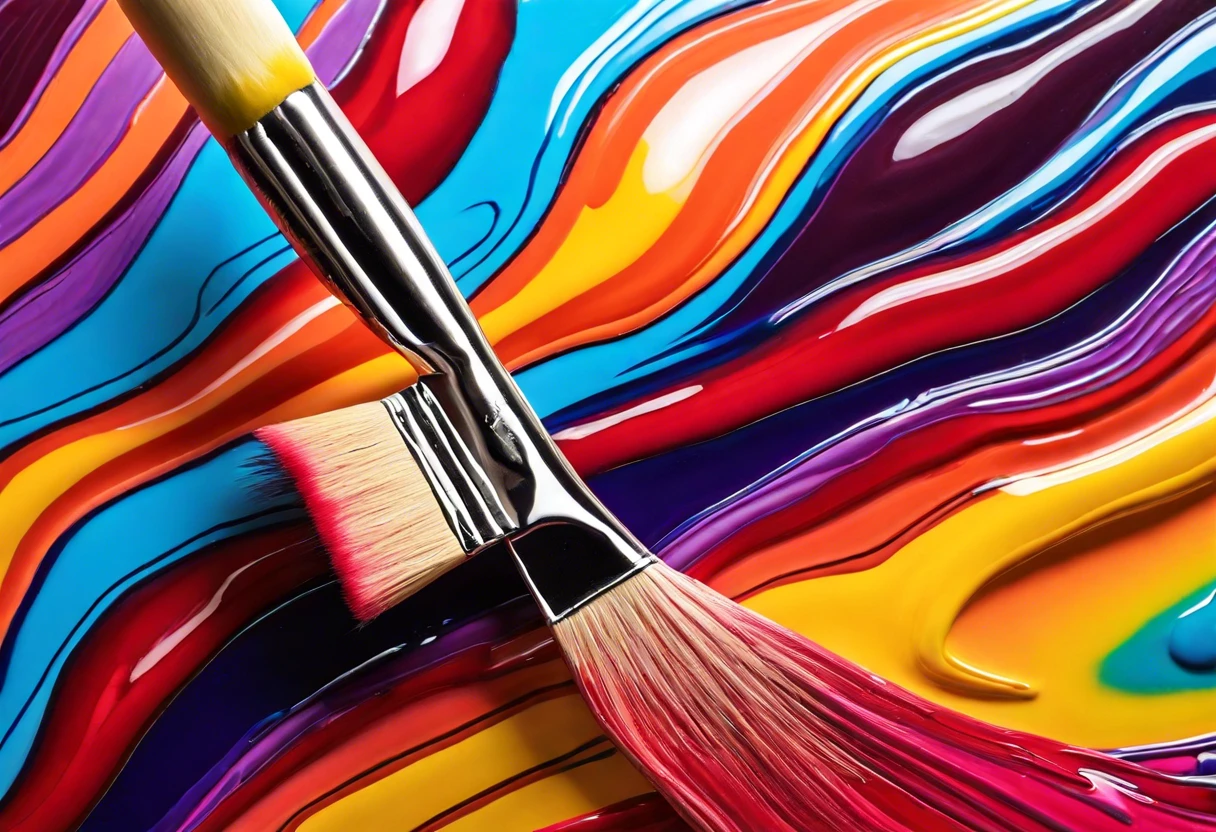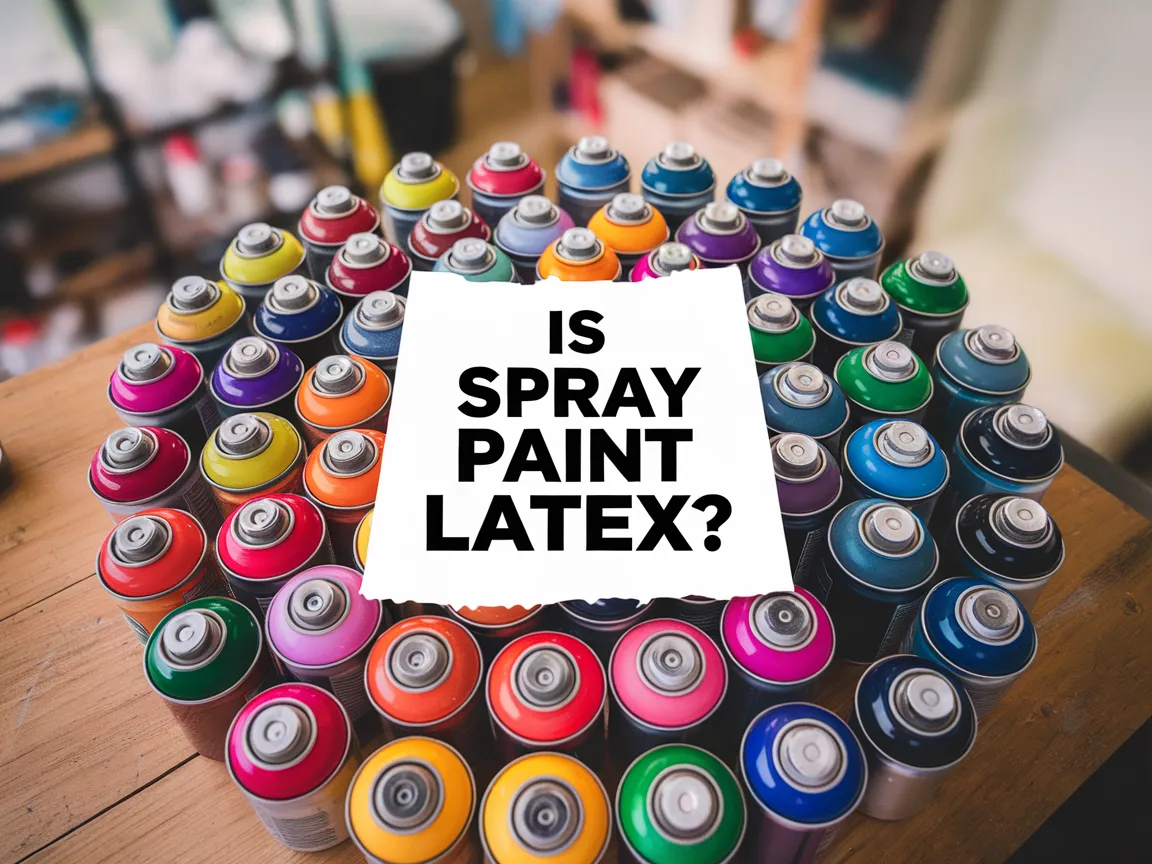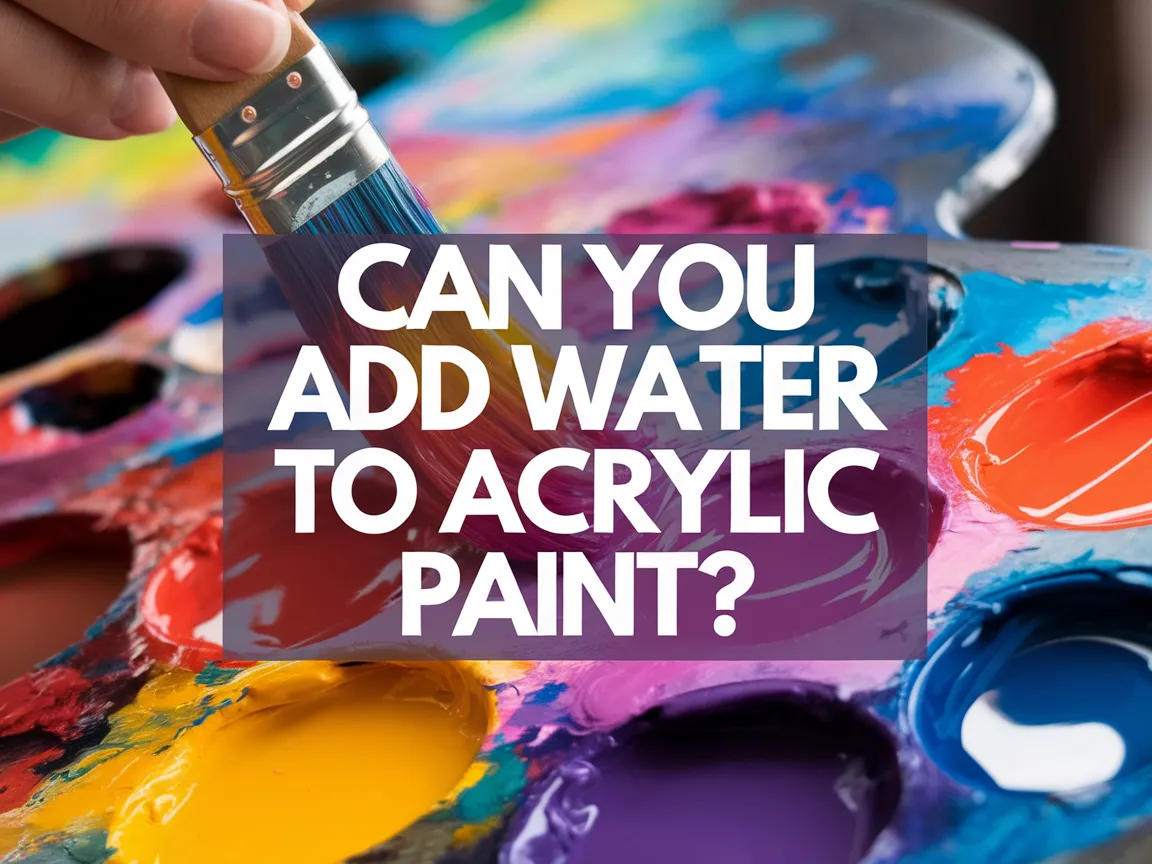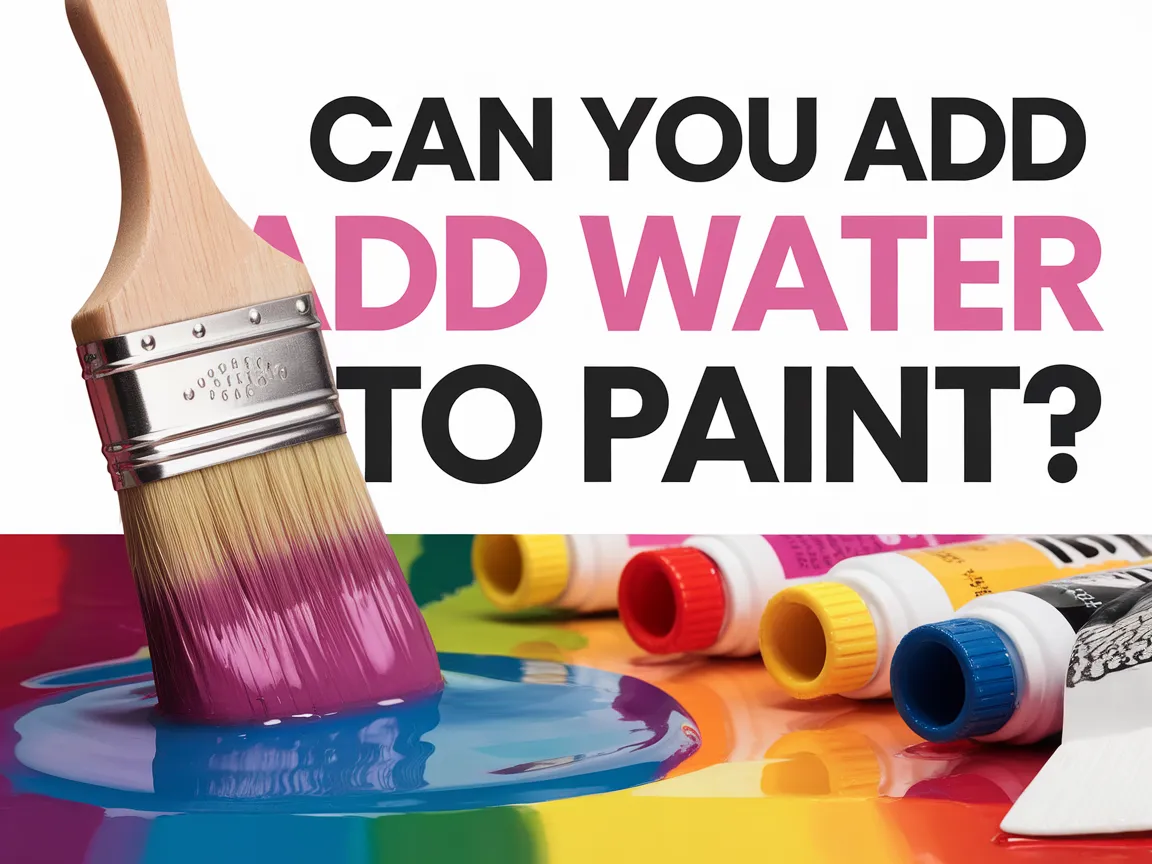Can You Put Polyurethane Over Acrylic Paint?
Published on: March 8, 2025 | Last Updated: January 7, 2025
Written By: Sarah McClintock
Polyurethane is a clear coating that protects surfaces, much like a comfy blanket keeps you warm. It’s shiny and tough, making things look snazzy and last longer.
So, can you put polyurethane over acrylic paint? It’s crucial to know because the right combo can give your art protection and prevent it from ruining. I’ve learned the hard way that slapping any finish on paint doesn’t work.
In this article, we’ll explore the basics of acrylic paint and polyurethane, key steps for a successful application, common issues, suitable types, creative project ideas, and answers to FAQ. If you’re wondering, can you apply polyurethane over chalk paint or what specific factors to consider, we’ve got you covered.
Contents
- 1 Can You Put Polyurethane Over Acrylic Paint?
- 2 What is Polyurethane?
- 3 Before You Start Applying Polyurethane Over Acrylic Paint
- 4 Steps to Successfully Apply Polyurethane Over Acrylic Paint
- 5 Factors Affecting the Application Of Polyurethane Over Acrylic Paint
- 6 Common Issues When Applying Polyurethane Over Acrylic Paint
- 7 Understanding the Interaction Between Polyurethane and Acrylic Paint
- 8 Polyurethane Application Techniques Over Acrylic Paint
- 9 Understanding the Drying Time of Polyurethane Over Acrylic Paint
- 10 Alternative Topcoats to Consider Over Acrylic Paint
- 11 Finishing Touches for a Professional Look
- 12 Creative DIY Project Ideas Using Acrylic Paint and Polyurethane
- 13 Frequently Asked Questions (FAQs)
- 14 Conclusion
- 15 Useful Resources
Can You Put Polyurethane Over Acrylic Paint?
Yes, you can put polyurethane over acrylic paint. It creates a durable finish. Just make sure the paint is completely dry first. This prevents any bubbling or peeling.
What is Polyurethane?
Polyurethane is a versatile polymer widely used in various forms. It’s made by linking organic units with urethane links and comes in both flexible and rigid variants, containing isocyanates and polyols. Over 10 million tons (9 Million Tonnes) of polyurethane products are produced annually worldwide!
The Finishing Touch
A freshly painted wall is a blank canvas. The best way to bring your room to life is with a single piece of statement art that ties everything together.
Browse Wall Art at Big Wall DecorNow, about using polyurethane over acrylic paint—I’ve tried it, and it adds a shine that serves both aesthetics and protection. Watching how it glides on fresh paint was an eye-opener!
It was incredibly helpful for a DIY project at home. I found that using polyurethane not only enhanced the durability of my acrylic paint but also provided a unique glossy finish. If you’re wondering whether you can mix or layer polyurethane with acrylics, it’s a game changer—just check for compatibility first! When working with different surfaces like aluminum boats, selecting the right paint becomes crucial for long-lasting protection and optimal coating performance.
Before You Start Applying Polyurethane Over Acrylic Paint
What do you need to get started?
- Polyurethane Sealer: You’ll need a product like Minwax Polyurethane (1 Quart or ~0.946 Liters). It’s essential for providing a durable, protective layer over your acrylic paint.
- Sandpaper: Get 220-grit sandpaper. This is necessary to gently smooth the acrylic surface before application, ensuring better adhesion.
- Paintbrush: Use a high-quality natural bristle brush, like a 2-inch (5.08 Cm) Wooster brush, to apply the polyurethane evenly without bubbles.
- Clean Rags: Have lint-free rags ready. They help wipe down the surface to remove dust and debris before sealing.
You should now have a good understanding of preparing surfaces, choosing products, and application tips. In the next part, we’ll discuss the steps for successful application.
Also See: Can You Bake Rustoleum Spray Paint? Find Out Here!

Steps to Successfully Apply Polyurethane Over Acrylic Paint
Here are the steps to nail it when adding polyurethane over acrylic paint.
-
Prepare the Surface
Start with a clean, smooth surface. Aim for a glossy finish to help the polyurethane bond well.
Use fine-grit sandpaper (Like 220-grit) to gently scuff the surface. This doesn’t need to be heavy; just enough to create some texture.
-
Select the Right Type Of Polyurethane
Choose water-based polyurethane. It works best over acrylics since it won’t yellow the paint.
Oil-based polyurethane may provide a richer finish but can darken lighter paint shades. Check compatibility before proceeding.
-
Test on a Small Area
Testing is crucial! Apply a small amount of polyurethane on an inconspicuous spot to see how the acrylic reacts.
Wait a few hours to observe any color changes or peeling. This will prevent issues later on.
-
Apply Polyurethane Evenly
Use a high-quality foam brush or synthetic brush for application. Dip the brush in the polyurethane and let it absorb for a second before applying.
Work in thin, even strokes. Thin coats dry faster and help prevent bubbling, which can ruin your project.
-
Allow Adequate Drying Time
Don’t rush this phase! Wait about 2 to 4 hours for the first coat to dry completely; check manufacturer recommendations.
In more humid climates, longer drying times might be needed. Monitor your workspace environment to ensure proper timing.
You should now have a good understanding of applying polyurethane over acrylic paint. In the next part, we’ll discuss influencing factors.
The Finishing Touch
A freshly painted wall is a blank canvas. The best way to bring your room to life is with a single piece of statement art that ties everything together.
Browse Wall Art at Big Wall DecorFactors Affecting the Application Of Polyurethane Over Acrylic Paint
What factors affect applying polyurethane over acrylic paint?
-
Surface Preparation: A clean, smooth surface ensures better adhesion of polyurethane.
-
Drying Time: Fully dried acrylic paint lets polyurethane cure effectively without issues.
-
Type of Acrylic Paint: Some acrylics resist solvents; check compatibility before application.
-
Application Method: Spray or brush techniques can affect the finish and appearance.
You should now have a good understanding of the elements influencing polyurethane use over acrylic paint. In the next part, we’ll discuss typical problems encountered during this process.
Common Issues When Applying Polyurethane Over Acrylic Paint
When my friend applied polyurethane over acrylic paint, it turned cloudy. Moisture trapped underneath caused this issue.
To fix it, let it cure fully for 24 to 48 hours and sand lightly. Choose water-based polyurethane to avoid further compatibility problems.
We have now covered common issues when applying polyurethane over acrylic paint. Next, we will explore the interaction between the two.

Understanding the Interaction Between Polyurethane and Acrylic Paint
It’s essential to know how polyurethane and acrylic paint work together.
-
Adhesion Mechanics
When applying polyurethane over acrylic paint, good adhesion is vital. The surface texture plays a big role. A smooth surface might not allow polyurethane to grip effectively, unlike a slightly roughened one. Researchers have long studied surface interactions in painting techniques, revealing fascinating insights about prehistoric painting adhesion methods.
-
Chemical Compatibility
Water-based polyurethane usually bonds well with acrylics because they’re both water-soluble. Conversely, oil-based polyurethane could react unpredictably, potentially causing changes in color or texture. If you want to ensure optimal adhesion and finish, you might want to explore acrylic paint techniques.
Polyurethane Application Techniques Over Acrylic Paint
Applying polyurethane the right way can impact the final look and durability.
-
Brushing vs. Spraying
Brushing gives you control but may lead to brush marks. Spraying often yields a smoother finish, but it requires proper equipment and technique.
-
Layering Technique
Applying thin layers of polyurethane is key. Aim for 1/16 inches (1.5 mm) thickness per layer for optimal results, allowing each layer to dry completely before adding another.
Understanding the Drying Time of Polyurethane Over Acrylic Paint
Drying time is crucial in ensuring a solid bond between acrylic and polyurethane.
| Polyurethane Type | Initial Drying Time (hrs) | Full Cure Time (days) | Recommended Waiting Time Before Second Coat (hrs) |
|---|---|---|---|
| Water-Based | 1-2 | 7 | 2-4 |
| Oil-Based | 4-6 | 30 | 4-6 |
| Spray Polyurethane | 1-2 | 7 | 2 |
| Heat-Resistant | 4-6 | 30 | 4-6 |
Alternative Topcoats to Consider Over Acrylic Paint
If you’re curious about more options, check these out!
-
Epoxy Coating
Epoxy offers an incredible level of protection. It’s often used in flooring and can create a hard, glossy finish over your acrylic art. Just keep in mind it has longer curing times!
-
Varnish
Varnish is available in different finishes—glossy, satin, or matte. It acts as a protective layer without yellowing, making it perfect for those vibrant acrylic colors!
-
Shellac
This natural finish dries quickly and is easy to apply, but be cautious as it can be damaged by water and alcohol!
Finishing Touches for a Professional Look
After applying polyurethane over acrylic, keep the temperature between 20-30°C (68-86°F). For best results, let it cure for at least 24 hours before heavy use.
Check the top coat for bubbles or streaks after 24 hours. Use products like Minwax Polyurethane to fill imperfections; aim for a thickness of 0.5-1 mm for optimal coverage.
The Finishing Touch
A freshly painted wall is a blank canvas. The best way to bring your room to life is with a single piece of statement art that ties everything together.
Browse Wall Art at Big Wall DecorIf this isn’t your first time, apply three additional coats, allowing each one to dry for 4-6 hours. Always sand lightly with 400-grit sandpaper for a smooth finish.
Creative DIY Project Ideas Using Acrylic Paint and Polyurethane
If you’re looking to jazz up your furniture, try painting a bold geometric design on a wooden stool, then seal it with polyurethane for a durable finish. Or, how about creating personalized wooden coasters, splashed with colors that reflect your vibe?
I would gather some plywood, acrylic paints, brushes, and polyurethane, rounding up about $30-$50 total. These projects could take a couple of hours, including drying time, and the wow-factor is totally worth the effort!
Now, onto unique alternatives: instead of traditional application, try mixing polyurethane with your favorite acrylic shades to create a custom-tinted sealant. Ever thought about blending acrylic paint with a poly topcoat for a soft-satin look? It’s a game changer! If you’re curious about professional painting techniques and potential costs, check out professional painting project expenses.
Frequently Asked Questions (FAQs)
Can You Use Polycrylic Instead Of Polyurethane on Acrylic Paint?
Yes, you can use Polycrylic instead of polyurethane on acrylic paint. Polycrylic provides good protection without yellowing, which stands at 84% transparent even after curing under normal conditions.
Will Polyurethane Change the Color Of Acrylic Paint?
Yes, polyurethane can change the color of acrylic paint. It may yellow over time, especially oil-based formulas. Clear water-based polyurethane reduces this tendency, making it a safer choice for preserving colors. If you’re concerned about potential paint damage, check out how chemical interactions affect paint surfaces.
How Many Coats Of Polyurethane Should You Apply Over Acrylic Paint?
You should apply at least two to three coats of polyurethane over acrylic paint for optimal protection. This process gives a well-embedded finish that shields your art, with 24 hours drying time recommended between coats. If you’re working on surfaces like asphalt and want to ensure proper paint adhesion, painting techniques for different surfaces can help you achieve the best results.
Can You Sand Between Coats Of Polyurethane on Acrylic Paint?
Yes, you can sand between coats of polyurethane on acrylic paint. Light sanding with 320-grit sandpaper helps achieve a smoother surface and better adherence, but allow 24 hours after each coat for the best results. If you’re working with 3D printed objects, you might want to explore specific painting techniques that enhance surface quality and optimize your painting process for 3D prints.
Is Polyurethane Safe for Indoor Use With Acrylic Paint?
Yes, polyurethane is safe for indoor use with acrylic paint when using water-based formulas. They have low volatile organic compounds (Vocs), typically around 100 g/L or less, keeping your workspace healthy. If you’re working with different materials like ABS plastic, you’ll want to prepare the surface correctly before painting.
Can You Apply Polyurethane Over Latex Paint?
Yes, you can apply polyurethane over latex paint. Latex paint’s water-based nature allows polyurethane to bond well, providing a durable finish, perfect for furniture and frames.
Can You Mix Polyurethane With Paint?
Yes, you can mix polyurethane with paint. Adding 10-20% polyurethane allows extra shine and durability while maintaining paint flexibility, but test on a sample before full application.
Conclusion
We covered topics like the types of polyurethane, important steps for application, recommended color palettes, common issues, and creative DIY project ideas. Each element plays a role in ensuring success when finishing your acrylic paint surface.
To answer the question, can you put polyurethane over acrylic paint? Yes, you can, but be mindful of compatibility, surface preparation, and the type of polyurethane used. Adhering to these guidelines will lead to excellent results.
For further insights and comprehensive guides, visit Paint Answers.
Useful Resources
- Smith, R. (2003). The Artist’s Handbook of Materials and Techniques (5th ed.). New York, NY: Knopf.
- Polyurethane over Acrylic Artist’s Paint? – WetCanvas: Online Living for Artists









